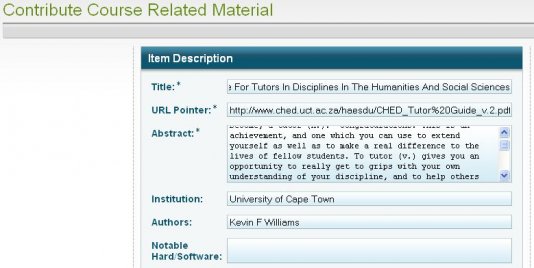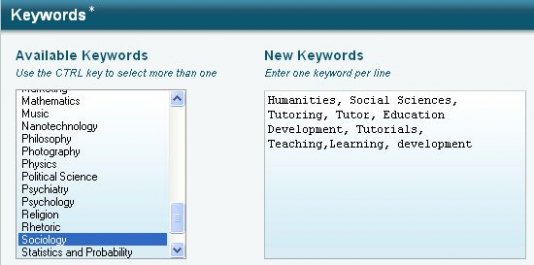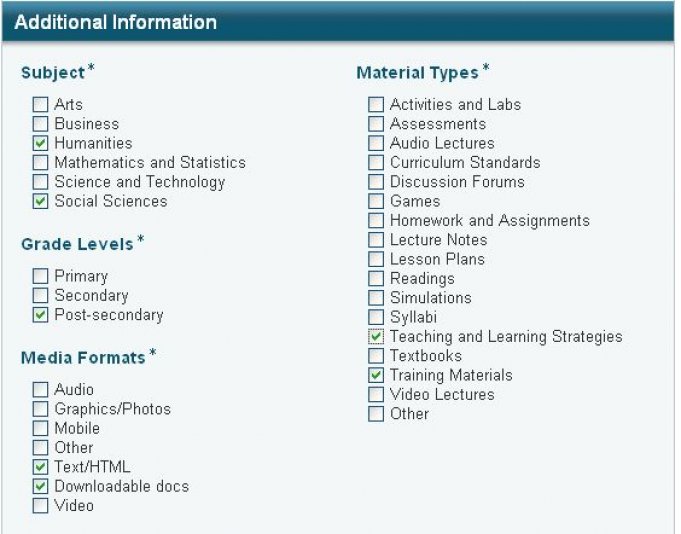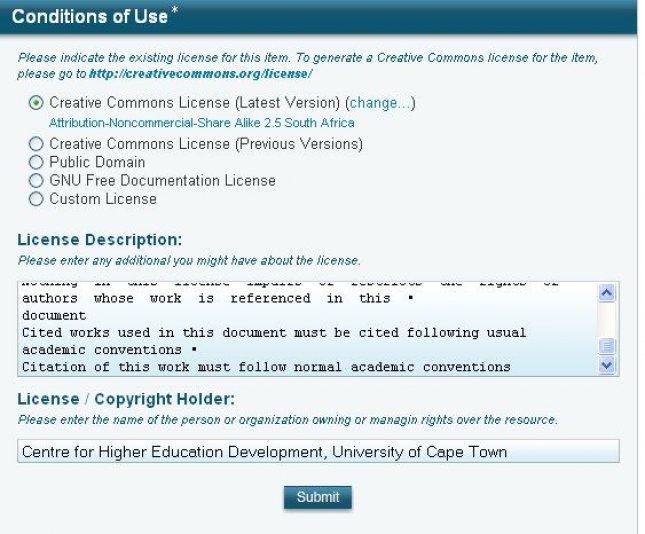First things first, I will argue that Open Educational Resources (OER) are currently being published and used at the University of Cape Town. Since no formal OER directory has been established, the resources are found scattered throughout departmental websites or on academic’s personal websites. The question is, can the resources be found by the world at large or university members not explicitly notified.
Resources such as this should be made available in a more free and transparent manner. Open resources of a high calibre can only improve UCT’s global image and reach. The goal of the OER project at UCT is to bring these resources out from hiding and to encourage new resources for presentation to the world at large.
The OER Commons website is a “network for teaching and learning materials, the web site offers engagement with resources in the form of social bookmarking, tagging, rating, and reviewing.” The role of such a website in our endeavour will be to catalogue and direct learners and academics from around the world to the open resources offered by UCT.
As of now the actual system that UCT will use to present the material has not been identified but the process of promoting and sharing the resources via OER Commons is being explored. Once the repository at UCT has been built the process of adding resources to OER Commons will be automated using RSS feeds. Therefor the point of this excercise is to simply introduce ourselves to OER Commons and understand the types of meta data it attached to educational resources.
Someone wanting to submit an individual resource to the OER Commons must be a member of the website. Signing up for the service was fairly easy. Once logged in you can submit a resource. Let us walk through the process of publishing a resource.
The submission page collects a number of specific details about the resource being submitted. We have submitted Dr. William’s publication; Guide For Tutors In Disciplines In The Humanities And Social Sciences.
Keywords will enable users of the OER Commons to locate specific material. We have added the basic keywords and as the material is used by the community additional keywords will be added.
Additional information about the resource is added.
Finally, and perhaps most importantly the licensing terms of the resource are defined. This will enable users of the resource to know how it may be used.
Once submitted we are presented with a summary page. Our resource is currently being verified by the OER Commons.
In summary, the following information was collected while submitting the resource:
Title
URL Pointer
Abstract
Institution
Authors
Notable Hard/Software
Keywords
Subject
Grade Level
Media Formats
Material Types
Conditions of Use
License Description
License/Copyright Holder
All of this information needs to be provided by the author when considering material as an OER. It is forseen that we will have a standardized form which the author must fill out to describe the resource. This would likely be part of the content management system we build to house our resources.





